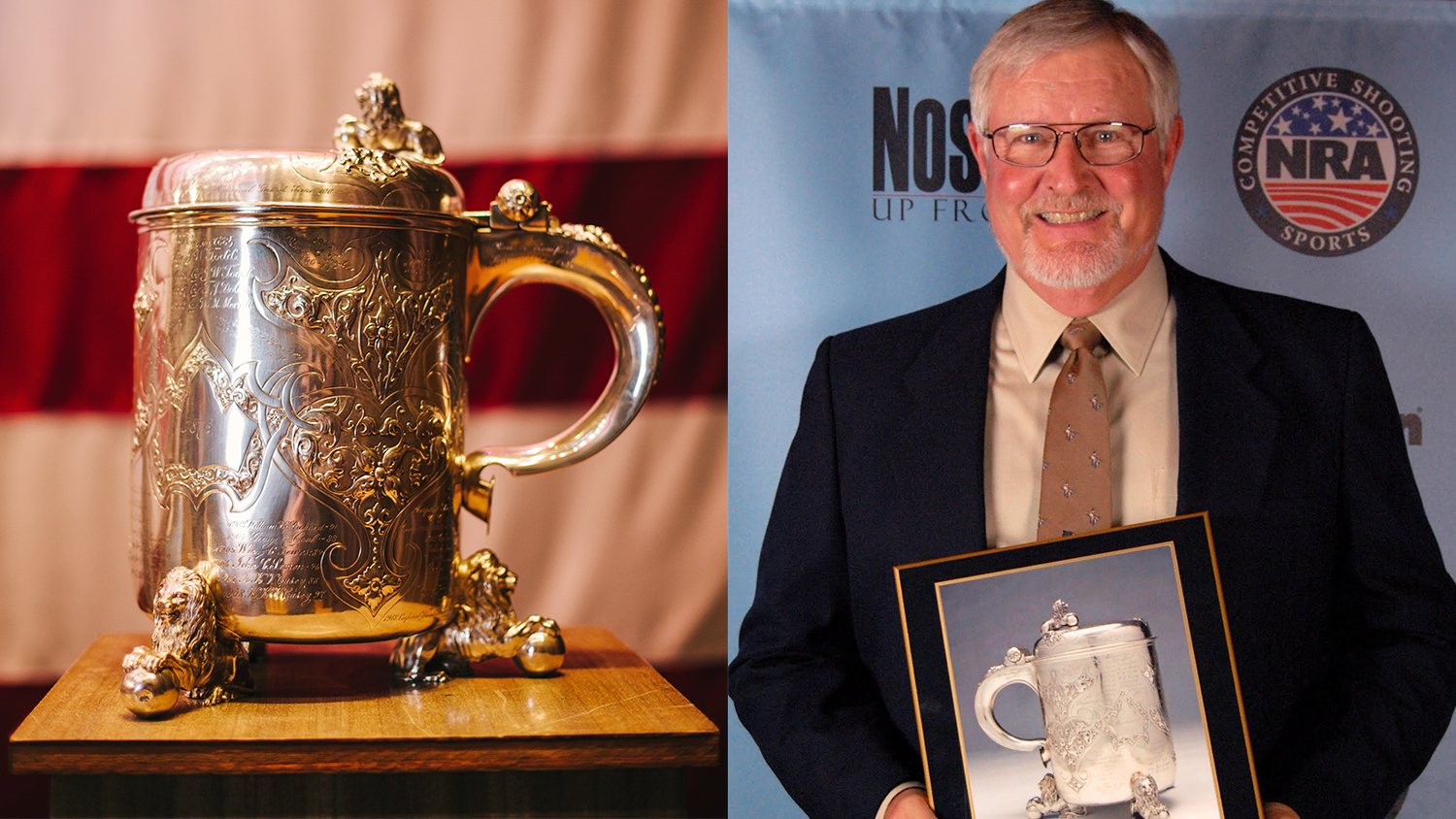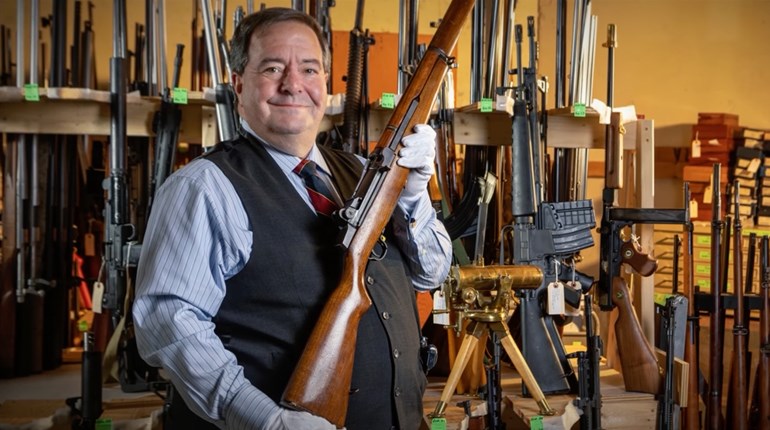
Above: With a score of 200-14X, Robert Gustin won the Wimbledon Cup at Camp Perry in 2012.
The successful win, by a narrow three point margin, of the American Rifle team over the Irish Rifle team in 1874 (where the U.S. was presented the Leech Cup) was understandably followed up by a request for a return match, the next year, in Ireland. We accepted and sent a team identical with the 1874 team (except for one member) to the Dollymount range near Dublin.
The Americans were greeted by a tumultuous welcome and the match was fired on June 29, 1875—in the presence of 30,000 spectators. The U.S. won that match, too, this time by a more comfortable 39 point margin. Flushed with victory, the U.S. wanted to shoot for the Elcho Shield, perhaps the most prestigious team shooting event in the U.K. To win that trophy would make us the undisputed long-range rifle team champions of the English-speaking world. Alas, it was not to be—the Elcho was restricted to teams from England, Scotland and Ireland. The U.S. proposed a three-way match with the Brits and the Scottish. The Brits declined. To salve any hurt feelings from these rebuffs Princess Louise of Great Britain presented the National Rifle Association of America with a fine, very large, silver tankard for U.S. competition—the famous Wimbledon Cup.
In that first year the trophy was contested only by members of the U.S. team; since 1876 it has been in annual competition, with any rifle with any sights, as the premier NRA long-range trophy in U.S. high power rifle shooting.
With the advent of the Model 1903 Springfield the dominant Wimbledon rifle became some variant of the ‘03, chambered for the .30-‘06 cartridge, usually with a longer, heavier barrel than the service issue.
In 1935, Ben Comfort changed the Wimbledon match forever. Comfort, though a knowledgeable rifleman, was not a prominent competitor. Nonetheless, he decided to win the Wimbledon.
Griffin and Howe made him a rifle, chambered for the then unheard-of (for competition) caliber of .300 H &H Magnum, based on a 1917 Enfield action with a long, heavy Winchester barrel. He mounted a five-power telescopic sight, the Western Cartridge Company loaded the ammunition and he was ready to go. Comfort was in the natural gas business, but also owned a working farm in Missouri. At his farm, he built a 1000-yard range, installed telephone service between the pits and the firing line and learned to shoot at 1000 yards with his farm hands providing pit service.
At Camp Perry, Comfort, unsure of his 1000-yard dope, entered the President’s Match [In 1935 it had a 1000-yard stage.] and used that match to verify sight settings. Although there was some challenge to this, Comfort’s action was ruled legal; he shot the Wimbledon—and won. Of the eight perfect scores Comfort’s was the best: 100-14V (the “V” target was used then: a 36-inch 5-count bull with a 20-inch V-ring). Right behind him were some of the best long-range shooters in the U.S.; in eighth place was former Olympic and World Champion Morris Fisher and in ninth place with a score of 99 was Emmet Swanson.
Since 1935 magnum cartridges, because of their advantages in exterior ballistics, have been the rule for the Wimbledon and for most 1000-yard shooting although there have been exceptions, among them Keith Turpie (1953) and Larry Moore (1963), who both won the Wimbledon with the .30-’06.
See more articles from NRA Historian Paul Nordquist here.


































